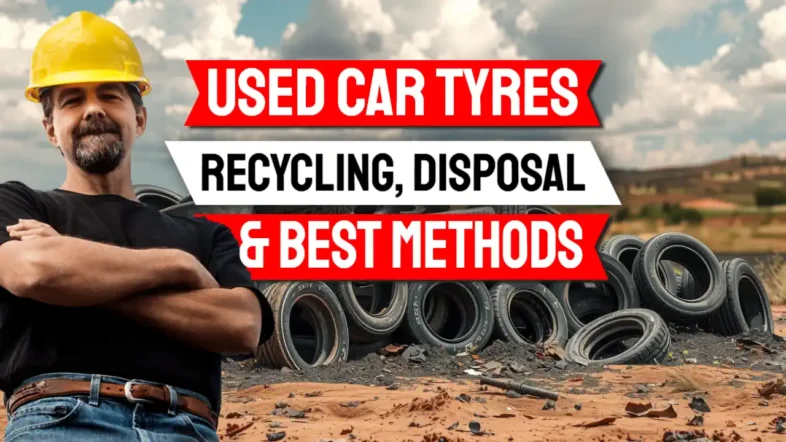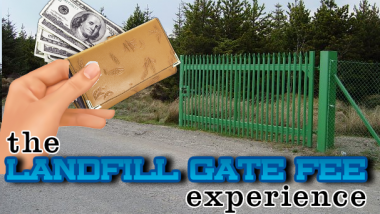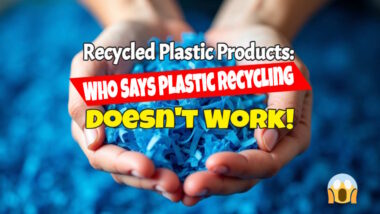Recycle Car Tyres: It's the best way to get rid of them! To recycle car tyres, take them to a licensed tyre retailer, specialist waste company, or local council recycling centre, as tyres are banned from landfills and must be processed at approved sites. The tyres are then broken down into rubber, steel, and textiles for use in products like playground surfaces, carpet underlay, road surfaces, and even for energy generation via pyrolysis.
Recycle Car Tyres – Article-At-A-Glance
- Recycling used car tyres prevents environmental hazards and reduces the 300 million tyres added to waste annually
- Proper tyre recycling methods include mechanical grinding, pyrolysis, retreading, devulcanization, and energy recovery
- Recycled tyre rubber creates products with 4-20 times smaller carbon footprints than virgin plastic materials
- Many tyre retailers offer convenient recycling programs as part of their customer services
- Innovative applications for recycled tyres range from playground surfaces to road construction materials
Every year, approximately 300 million used car tyres are discarded worldwide, creating a massive environmental challenge. Rather than allowing these tyres to pile up in landfills or illegal dumps, recycling offers a sustainable solution that transforms this waste into valuable resources.
A sustainable Living Initiative has been at the forefront of educating consumers about responsible tyre disposal options that protect our environment while creating new products.
The journey of a recycled tyre is remarkable – from worn rubber that once traversed thousands of miles to becoming playground surfaces, garden planters, or even components in new roads. Understanding how this transformation happens and why it matters is the first step toward making responsible choices with your old tyres.
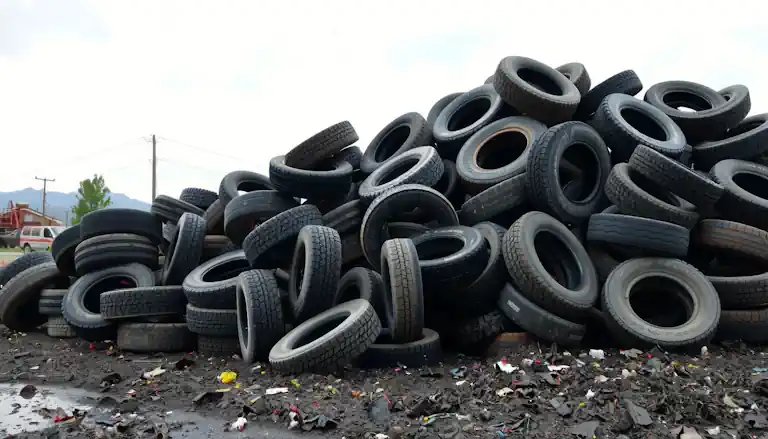
Recycle Car Tyres – Why Old Tyres Are an Environmental Nightmare
Discarded tyres present several serious environmental and health hazards when improperly disposed of. They take up valuable landfill space and their unique shape allows them to trap air, water, and even gases, making them prone to rising to the surface and damaging landfill liners. When abandoned in piles, they quickly become breeding grounds for mosquitoes and rodents that can spread diseases to surrounding communities.
Fire Hazard
Perhaps most alarmingly, tyre piles present significant fire hazards. Once ignited, tyre fires are exceptionally difficult to extinguish and can burn for months, releasing toxic chemicals including carbon monoxide, sulfur dioxide, and oils that contaminate air, soil, and groundwater. A single burning tyre can release over two gallons of oil, and the black smoke contains particulate matter that causes respiratory issues.
Environmental Hazard
The environmental impact extends to the waste of valuable materials. Tyres contain rubber, steel, fiber, and other compounds that require significant resources to produce. When dumped rather than recycled, these materials and the energy used to create them are lost forever instead of being recovered in the circular economy.

“Ways to upcycle and recycle car tyres – Wikipedia” from en.wikipedia.org and used with no modifications.
Collection and Transportation: First Steps to Tyre Recycling
The recycling process begins with the proper collection and transportation of used tyres. Most countries have established collection systems where consumers can drop off their old tyres when purchasing new ones. This first step is crucial because proper collection prevents illegal dumping and ensures tyres enter the recycling stream.
How to Find Local Tyre Collection Points
Finding a responsible way to dispose of your old tyres is easier than you might think. Most tyre retailers and automotive service centres accept used tyres when you purchase replacements, often charging a small disposal fee that supports proper recycling. Many local recycling facilities and waste management centres also accept tyres, though they may have specific drop-off times or quantity limits. For more insights on sustainable disposal, check out these best zero-waste disposal methods.
For those with just a few tyres to dispose of, community collection events organised by local governments offer convenient options. A simple online search for “tyre recycling near me” or checking your local government's waste management website can provide up-to-date information on collection points and any associated fees. Some areas even offer pick-up services for a nominal charge, making responsible disposal even more convenient.
What Happens During Tyre Transport
Once collected, used tyres embark on their recycling journey via specialised transport vehicles designed to handle large quantities efficiently. These transports are carefully managed to prevent hazards during transit, with tyres typically stacked or arranged to maximise space while maintaining stability. The transportation logistics are significant – a standard semi-trailer can carry approximately 1,000 passenger tyres per load. To learn more about the recycling process, visit how automobile tyres are recycled.
Tyres are Categorised Based on their Condition and Potential
During transport, tyres are categorised based on their condition and potential for different recycling methods. Some might be suitable for retreading, while others are destined for mechanical processing or energy recovery. This initial sorting helps streamline the recycling process once the tyres reach their destination facility.
Environmental regulations govern the entire transportation process to prevent accidents and ensure that tyres reach proper recycling facilities rather than illegal dumps. Tracking systems and documentation help maintain accountability throughout the supply chain, from the collection point to the processing facility.
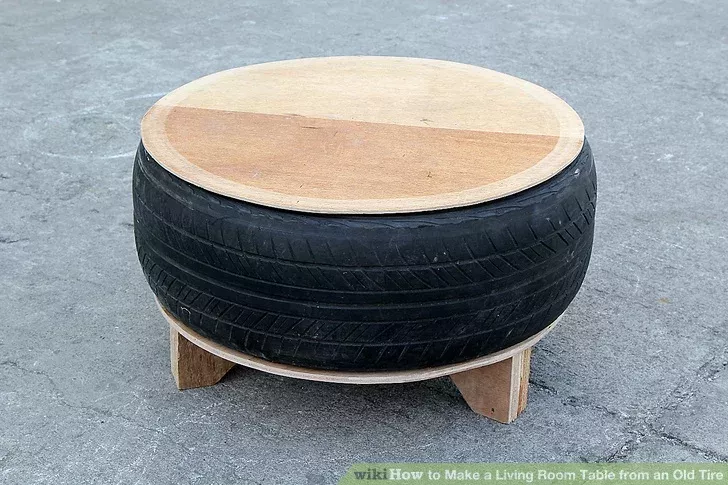
“tyre furniture, old tyres, diy furniture” from in.pinterest.com and used with no modifications.
5 Best Methods for Car Tyre Recycling
The recycling industry has developed several effective methods to process used tyres, each with unique advantages and applications. These technologies allow for the recovery of valuable materials while minimising environmental impact. The method chosen depends on factors like local infrastructure, economic considerations, and the desired end products.
1. Mechanical Recycling: Grinding Tyres into Rubber Crumb
Mechanical recycling is the most common method used worldwide, involving the physical breakdown of tyres into smaller pieces without changing their chemical composition. The process begins with whole tyres being fed into powerful shredders that reduce them to chips typically 2 inches or smaller in size. These chips then pass through granulators that further reduce their size while separating the rubber from steel and fiber components using magnets and air classification systems. The result is rubber crumb of various sizes that can be used in numerous applications, including playground surfaces, athletic fields, and asphalt modification for roads.
2. Pyrolysis: Converting Tyres into Fuel and Carbon
Pyrolysis offers an innovative approach to tyre recycling by thermally decomposing rubber in an oxygen-free environment. This advanced process breaks down tyres at temperatures between 400-700°C, transforming the rubber compounds into valuable byproducts without combustion. The absence of oxygen prevents burning while allowing molecular breakdown of the complex rubber polymers. For more detailed information on tyre recycling methods, visit this comprehensive guide.
A Valuable Product – Pyrolytic Oil
The process yields several commercially valuable products. Pyrolytic oil, similar to industrial fuel oil, can be refined further or used directly as fuel. Carbon black, which comprises about 30% of the output, serves as a reinforcing agent in new rubber products or as a pigment. Steel wire is recovered intact and can be recycled in traditional metal recycling streams. Additionally, the process produces synthetic gas that can be captured and used to power the pyrolysis operation itself, improving energy efficiency.
While pyrolysis requires significant upfront investment in specialised equipment, it represents one of the most complete recovery methods available. Modern facilities can process up to 20,000 tons of tyres annually with minimal emissions when properly operated, making it increasingly attractive as technology advances and scales.
3. Retreading: Giving Tyres a Second Life
Retreading extends the useful life of tyre casings by replacing only the worn tread rather than discarding the entire tyre. This resource-efficient process begins with a thorough inspection of the used tyre casing to ensure structural integrity. Any damaged casings are rejected and sent for other recycling methods.
Approved casings undergo buffing to remove remaining tread and prepare the surface for new rubber application. New tread rubber is then precisely applied to the prepared casing using heat and pressure to create a molecular bond. Modern retreading technologies utilise computerised equipment to ensure uniformity and quality comparable to new tyres. The finished retreaded tyre undergoes rigorous testing before returning to service.
Commercial Truck and Aircraft Tyres
This method is particularly popular for commercial truck and aircraft tyres, where it reduces raw material usage by up to 70% compared to manufacturing new tyres. While passenger vehicle tyres are less commonly retreaded due to economic factors, the process represents one of the most resource-efficient approaches to tyre lifecycle management when applicable.
4. Devulcanization: Breaking Down Rubber for Reuse
Devulcanization tackles one of the most challenging aspects of rubber recycling by reversing the chemical process that gives tyres their durability. During tyre manufacturing, rubber compounds are vulcanised—heated with sulfur to create cross-linked molecular structures that provide strength and elasticity. This chemical transformation was historically considered irreversible, limiting recycled rubber's applications.
Devulcanization Technologies
Modern devulcanization technologies use combinations of heat, chemicals, microwaves, or ultrasonic energy to selectively break the sulfur bonds without damaging the polymer chains. The resulting material regains many properties of virgin rubber and can be incorporated into new rubber products at higher percentages than traditional recycled rubber crumb. This breakthrough allows recycled rubber to partially replace virgin materials in manufacturing new tyres and high-performance rubber products.
While still evolving and scaling commercially, devulcanization represents a significant advancement toward a true circular economy for rubber products. Research continues to improve efficiency and quality, with some processes now achieving up to 80% recovery of original rubber properties.
5. Energy Recovery: Using Tyres as Fuel
Tyre-derived fuel (TDF) utilises the high energy content of rubber as an alternative to coal or other fossil fuels. With a calorific value of approximately 14,000 BTUs per pound—higher than most coals—tyres provide efficient energy when properly combusted. Modern facilities shred tyres to consistent sizes that optimise burning efficiency while sophisticated emission control systems capture potential pollutants. For more on recycling and waste management, check out these 10 ways to reduce, reuse, and recycle.
Co-firing in Cement Kilns
This method is particularly common in cement kilns, where the extremely high operating temperatures (1400-1500°C) ensure complete combustion while the steel components in tyres provide iron needed in cement production. Paper mills, power plants, and industrial boilers also utilize TDF to reduce their dependency on traditional fossil fuels. The controlled environment of these industrial facilities allows for much cleaner burning than tyre fires, with emissions comparable to or better than coal.
While energy recovery ranks lower than material recycling in the waste hierarchy, it provides a valuable solution for tyres that cannot be recycled through other methods. Modern facilities can recover up to 25% more energy from tyres than from coal per unit weight, while reducing net carbon emissions when displacing virgin fossil fuels. For those interested in broader sustainability practices, consider exploring 10 ways to reduce, reuse, and recycle to further enhance your environmental impact.
Innovative Products Made from Recycled Tyres
The versatility of recycled tyre materials has sparked remarkable innovation across multiple industries. What once represented an environmental liability now serves as a valuable resource for creating sustainable products with unique performance characteristics. The rubber, steel, and textile components recovered through recycling processes find their way into hundreds of applications that touch our daily lives.
- Rubber mulch and playground surfaces that improve safety and durability
- Athletic tracks and sports fields with superior shock absorption
- Rubberised asphalt that reduces road noise and improves durability
- Flooring products for homes, gyms, and commercial buildings
- Erosion control systems for waterways and slopes
- Railroad ties that outlast traditional wooden versions
- Moulded products like wheel chocks, speed bumps, and traffic barriers
Expanding Market for Recycled Tyre Products
The market for recycled tyre products continues to expand as manufacturers recognise both the environmental benefits and the unique performance properties these materials offer. In many applications, recycled rubber outperforms virgin materials in durability, weather resistance, and shock absorption while significantly reducing the carbon footprint of production.
Economic incentives further drive innovation, as recycled materials often cost less than virgin alternatives while offering comparable or superior performance. This creates a rare win-win scenario where environmental benefits align with business advantages, accelerating adoption across multiple sectors. For instance, the use of recycled plastic products exemplifies how businesses can reduce costs while maintaining quality.
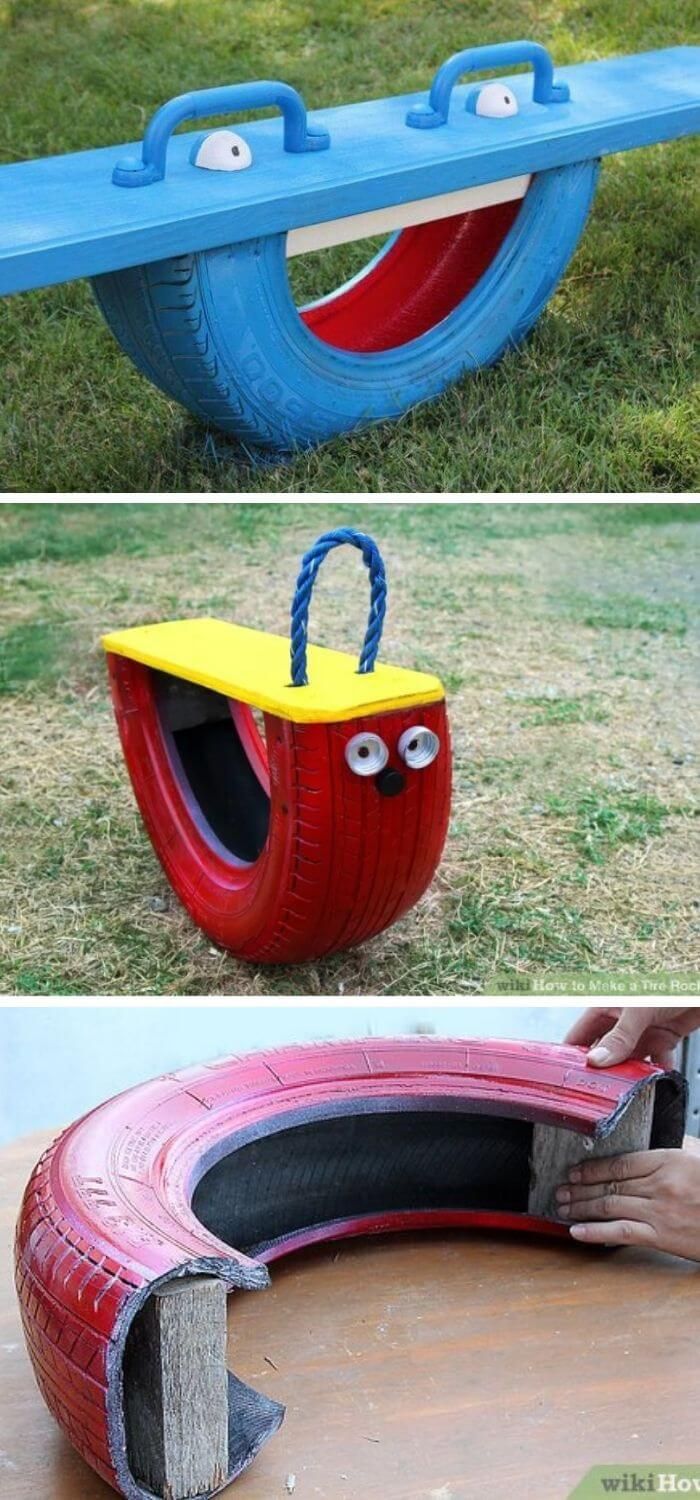
“DIY Recycled Old Tire Furniture Ideas …” from sk.pinterest.com and used with no modifications.
Playground Surfaces and Athletic Fields
Recycled tyre rubber has revolutionised safety surfaces for playgrounds across the world. The material's shock-absorbing properties significantly reduce the risk of injuries from falls, meeting strict safety standards while providing durability that outlasts traditional materials like wood chips or sand. These surfaces come in various forms, from loose rubber mulch to bound rubber tiles and poured-in-place surfaces that can be customised with colours and designs.
Recycled Rubber Surfaces
Athletic facilities benefit similarly from recycled rubber surfaces. Running tracks, basketball courts, and multipurpose sports fields utilise recycled tyre materials to create resilient surfaces that reduce joint stress for athletes while withstanding intense use and extreme weather conditions. The material's excellent drainage properties prevent water accumulation, extending usable time and reducing maintenance costs. For more sustainable practices, consider exploring zero-waste disposal methods to further enhance environmental benefits.
A single playground might utilise rubber from hundreds of recycled tyres, creating a significant environmental impact while providing a safer play environment for children. These installations typically last 8-12 years, substantially longer than traditional materials, making them cost-effective despite higher initial installation costs.
Road Construction Materials
Rubberised asphalt concrete (RAC) represents one of the largest-volume applications for recycled tyre rubber. By incorporating ground tyre rubber into asphalt mixtures, road builders create surfaces with improved durability, reduced cracking, and significantly lower traffic noise. Studies have shown noise reductions of 3-5 decibels compared to conventional asphalt, equivalent to reducing traffic volume by 50%.
Rubberised Asphalt Road Benefits
Beyond noise reduction, rubberised asphalt roads demonstrate better skid resistance in wet conditions, improving safety while reducing spray from vehicles. These roads typically last 20-40% longer than conventional asphalt pavements, reducing lifetime costs despite slightly higher initial investment. The thermal properties of rubber also help these roads resist extreme temperature fluctuations that cause conventional asphalt to crack in cold weather or soften in heat.
A single mile of two-lane rubberised asphalt road can use rubber from approximately 2,000 end-of-life tyres, creating substantial environmental benefits while improving infrastructure quality. This application continues to grow as more transportation departments recognise its performance and lifecycle advantages.
Home and Garden Products
The durability and weather resistance of recycled tyre rubber make it ideal for outdoor home and garden products. Landscaping tiles, garden edging, and decorative mulch derived from recycled tyres provide long-lasting alternatives to traditional materials while helping divert waste from landfills. These products resist fading, cracking, and degradation from UV exposure, maintaining their appearance for many years.
Indoor Applications to Recycle Car Tyres
Indoor applications are equally innovative, with recycled rubber appearing in anti-fatigue mats for kitchens, durable flooring for home gyms, and underlayment for carpets and laminate flooring. The material's natural vibration-dampening properties make it excellent for reducing noise transmission between floors in multi-story buildings. For more ideas on sustainable practices, explore 10 ways to reduce, reuse, and recycle.
Even furniture designers have embraced recycled tyre materials, creating everything from outdoor seating to artistic statement pieces that combine sustainability with unique aesthetics. These products often highlight their recycled origins as a selling point, appealing to environmentally conscious consumers looking to reduce their environmental footprint.
DIY Ways to Repurpose Old Tyres at Home
For the creatively inclined, used tyres offer unlimited DIY possibilities that combine environmental responsibility with practical functionality. With basic tools and materials, old tyres can be transformed into useful items that add character to your home and garden while keeping these materials out of the waste stream. Discover 10 ways to reduce, reuse, and recycle to further enhance your eco-friendly projects.
Garden Planters and Landscape Features
Transforming old tyres into garden planters represents perhaps the easiest and most popular DIY repurposing project. By simply cleaning the tyre, painting it with exterior paint for weather protection, and adding a bottom layer (optional, using plywood or heavy plastic), you create an instant planter ready for soil and plants. Stacking and staggering multiple painted tyres creates tiered planters perfect for strawberries, herbs, or cascading flowers.
Create Raised Garden Beds
More ambitious gardeners use tyres to create raised garden beds by partially burying them or stacking them in configurations that maximise growing space while minimising bending. The black rubber naturally absorbs heat, making these beds ideal for plants that thrive in warmer soil temperatures. Some gardeners report earlier harvests from tyre gardens compared to traditional beds, particularly in cooler climates.
Beyond planters, tyres can be transformed into garden steps on sloped terrain, retaining walls for erosion control, or even decorative borders when painted bright colours and partially buried around garden edges. Their durability ensures these features will last for many years with minimal maintenance. For more creative ideas on repurposing materials, explore these ways to reduce, reuse, and recycle.
Outdoor Furniture Projects
With some creativity and basic tools, old tyres can be converted into functional outdoor furniture pieces. A simple tyre ottoman requires just cleaning the tyre, wrapping it with rope or fabric, and adding a cushioned top. More advanced projects include tyre chairs, where strategic cutting and folding of the rubber creates surprisingly comfortable seating when finished with cushions or upholstery.
Children's Outdoor Play Equipment
Children's outdoor play equipment represents another popular category for DIY tyre projects. Tyre swings, climbing structures, and obstacle courses can be created using secure fastening methods and proper safety considerations. These projects not only repurpose waste materials but also create durable play equipment that withstands weather and heavy use.
For those with artistic inclinations, old tyres can become sculptural garden art through cutting, shaping, and painting. From tyre animals to abstract sculptures, these projects transform industrial waste into conversation pieces while developing skills in working with this unique material. For more inspiration on sustainable practices, consider exploring ways to reduce, reuse, and recycle.
How to Choose the Right Tyre Disposal Method
With multiple recycling and repurposing options available, selecting the most appropriate method for your specific situation involves considering several factors. The condition of your tyres, local availability of recycling facilities, and your environmental priorities all influence this decision. Making an informed choice ensures your tyres have the most beneficial second life possible.
Environmental Impact Comparison
From an environmental perspective, the hierarchy of preferred tyre disposal methods follows the waste management principle of “reduce, reuse, recycle.” Retreading sits at the top of this hierarchy when tyres have suitable casings, as it extends useful life with minimal processing. For tyres unsuitable for retreading, material recycling methods like mechanical grinding or devulcanization offer the next best environmental outcome by recovering materials for new products.
Energy recovery through controlled combustion provides environmental benefits compared to landfilling, but ranks lower than material recycling. When properly conducted in facilities with advanced emission controls, energy recovery captures the fuel value of tyres while displacing fossil fuels. The environmental footprint varies significantly based on the specific technology employed and emission control systems in place.
DIY repurposing extends the life of intact tyres but typically delays rather than replaces eventual recycling needs. While creative reuse keeps tyres out of the waste stream temporarily, these projects will eventually require proper end-of-life management when they deteriorate beyond usefulness. The environmental value comes from extending the service life before final processing is needed.
Environmental Impact Ranking (Best to Worst)
1. Retreading (for suitable tyres)
2. Material recycling (mechanical, devulcanization)
3. DIY repurposing for long-term use
4. Energy recovery in controlled facilities
5. Landfill disposal (where legally permitted)
6. Improper disposal/illegal dumping (severe environmental harm)
Cost Considerations
The economics of tyre disposal vary significantly by location and method. Most retailers charge a disposal fee when replacing tyres, typically ranging from $2 to $5 per passenger tyre, which covers collection and transportation to recycling facilities. Some regions impose mandatory recycling fees at the point of new tyre purchase to fund collection and processing infrastructure, essentially prepaying for eventual recycling costs.
DIY repurposing generally represents the lowest immediate cost option but requires personal time investment and potentially additional materials. Retreading offers economic advantages for commercial fleet operators but is less commonly available for passenger vehicles in many markets. For consumers, the most practical approach typically involves paying the standard recycling fee when purchasing new tyres, ensuring proper handling through established channels.
When evaluating costs, it's important to consider the hidden environmental costs of improper disposal. While illegal dumping might appear “free” in the short term, the environmental damage and eventual cleanup costs far exceed proper recycling fees. Most communities impose significant fines for improper tyre disposal, further increasing the true cost of irresponsible management.
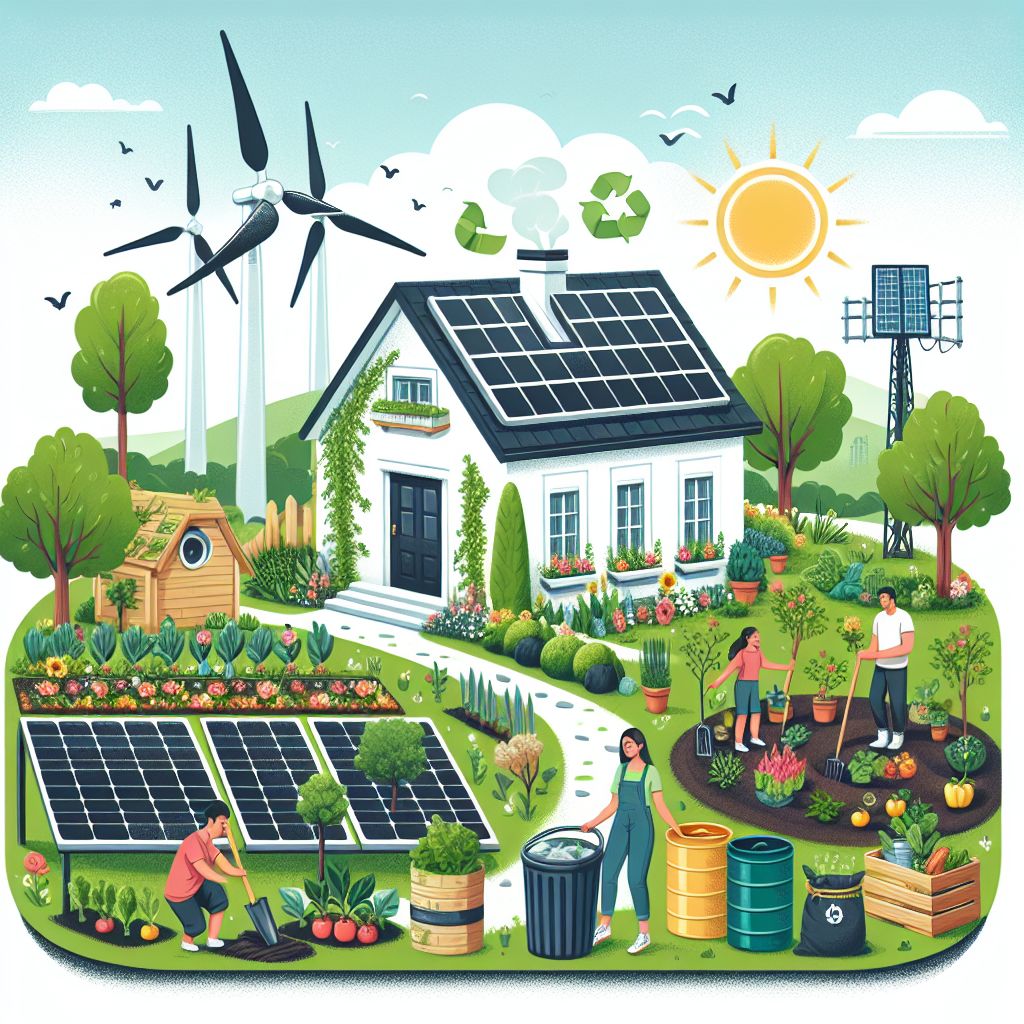
The Future of Tyre Recycling Technology
The tyre recycling industry continues to evolve rapidly with technological innovations that promise to increase recovery rates and expand applications for recycled materials. Research into advanced devulcanization techniques aims to recover rubber with properties increasingly similar to virgin materials, potentially enabling true closed-loop recycling where old tyres become new tyres. Biological processes using specific microorganisms to break down rubber compounds represent another frontier, potentially offering lower-energy alternatives to current mechanical and thermal methods.
Artificial intelligence and robotics are transforming sorting and processing operations, improving efficiency and worker safety. Automated systems can now identify and sort tyres by type and condition, directing each to the most appropriate recycling pathway. These technologies reduce processing costs while increasing the percentage of materials successfully recovered, making recycling economically viable for a wider range of tyre types.
Innovative end-use applications continue to expand market demand for recycled tyre materials. Researchers are developing advanced construction materials incorporating recycled rubber that offer improved insulation, sound dampening, and seismic resistance. The growth of green infrastructure creates new opportunities for recycled rubber in permeable pavement systems, green roof components, and stormwater management solutions that address multiple environmental challenges simultaneously.
Take Action: What You Can Do with Your Old Tyres Today
Taking responsibility for your used tyres starts with simple awareness of proper disposal channels. When purchasing new tyres, always ask your retailer about their recycling program and be willing to pay the nominal recycling fee that ensures proper handling. If you have tyres accumulated at home, contact your local solid waste authority to learn about collection events or approved drop-off locations. Many communities offer periodic special collection days specifically for tyres and other hard-to-recycle items.
For those with entrepreneurial interests, the growing market for recycled tyre products offers business opportunities ranging from collection services to manufacturing innovative products. Supporting businesses that utilise recycled tyre materials encourages further market development and closes the loop in the circular economy. Your purchasing choices for products like rubber mulch, flooring, and playground surfaces directly influence demand for recycled materials.
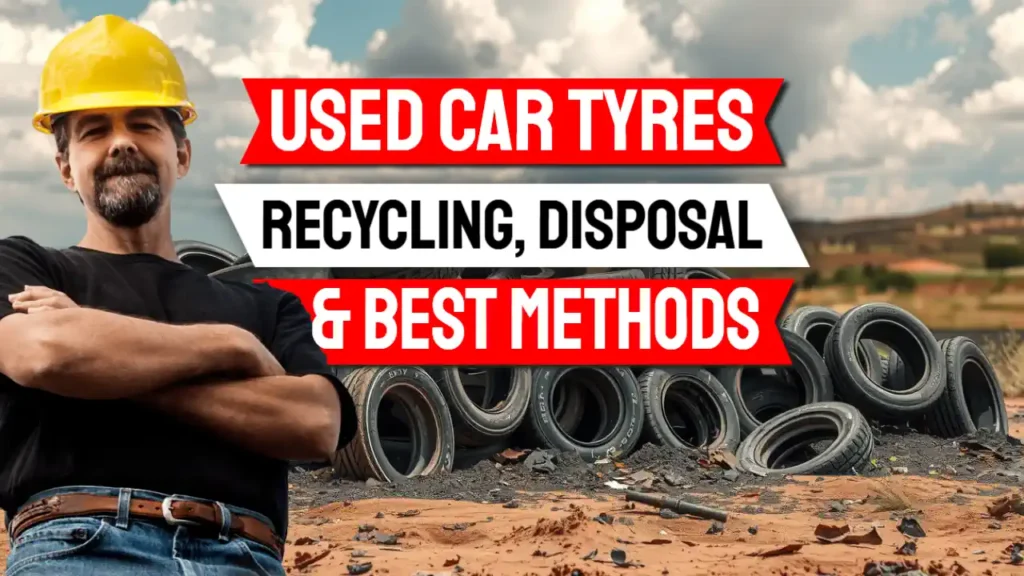
Frequently Asked Questions About How to Recycle Car Tyres
The complexity of tyre recycling naturally generates questions from consumers seeking to make responsible choices. Understanding the answers to these common questions helps demystify the process and encourages participation in proper tyre management programs.
How much does it cost to recycle car tyres?
Recycling costs for passenger car tyres typically range from $2-5 per tyre when disposed of through retailers or authorised collection points. Commercial truck tyres may cost $5-20 each due to their larger size and greater processing requirements. Many tyre retailers include this fee in their service charges when replacing tyres, making it a seamless part of regular tyre maintenance. Some regions have implemented manufacturer responsibility programs that incorporate recycling costs into the original purchase price, eliminating separate disposal fees.
Are recycled tyre products safe for children and pets?
Modern recycled tyre products undergo extensive processing that removes or encapsulates potentially harmful compounds, making them safe for most applications including children's play areas. Reputable manufacturers conduct leaching tests to ensure their products don't release harmful substances when exposed to rain or other environmental factors. Playground surfaces made from recycled tyres must meet stringent safety standards for impact absorption, toxicity, and durability before installation in public spaces.
For garden applications where food is grown, some experts recommend using recycled rubber primarily for pathways and non-food areas rather than direct contact with edible plants. This precautionary approach addresses concerns about potential leaching of zinc or other compounds over time, though research indicates minimal risk when products are properly manufactured. For more insights into sustainable practices, explore ways to reduce, reuse, and recycle.
Can all types of tyres be recycled using the same methods?
Different tyre types require specialised handling due to variations in composition and construction. Passenger car tyres, truck tyres, off-road equipment tyres, and aircraft tyres each contain different proportions of rubber, steel, and textile materials optimised for their specific applications. These differences affect how they respond to various recycling processes and what end products they're best suited for. For more insights on sustainable practices, check out these ways to reduce, reuse, and recycle.
Large off-road tyres from mining and construction equipment present particular challenges due to their massive size and extremely durable construction. These specialised tyres often require initial cutting or sectioning before they can be processed through standard recycling equipment. Some facilities specialise exclusively in these larger tyres, using custom machinery designed for their unique characteristics.
What percentage of tyre materials can actually be recovered through recycling?
Modern tyre recycling facilities can recover nearly 100% of tyre materials when combining various processing methods. Mechanical recycling typically recovers 70% as rubber crumb, 15% as steel, and 15% as fiber, with minimal waste. Pyrolysis achieves similar recovery rates but transforms the materials into different outputs: approximately 45% pyrolytic oil, 30% carbon black, 10-15% steel, and 10% gas that can be used to power the process itself. In fact, the use of gas to power processes is an innovative approach in recycling and energy recovery.
The quality and usability of recovered materials continue to improve with technological advances. While early recycling processes produced lower-grade materials with limited applications, modern techniques yield increasingly refined outputs suitable for higher-value products. This evolution enhances both the environmental and economic benefits of tyre recycling programs.
Is it legal to dispose of tyres in regular waste collection?
Most jurisdictions specifically prohibit disposing of whole tyres in regular waste collections or landfills. These restrictions exist because tyres don't compress well in landfills, tend to rise to the surface over time, and create potential fire hazards. In the United States, most states have implemented specific regulations governing tyre disposal, often requiring specialised handling and processing through authorised facilities.
Penalties for improper tyre disposal can be substantial, ranging from hundreds to thousands of dollars, depending on the quantity and circumstances. These regulations aim to prevent illegal dumping that creates environmental hazards and blights communities. Always check local regulations or consult with your waste management provider before attempting to dispose of tyres through regular collection services.
By understanding and utilising proper recycling channels, you contribute to a circular economy that transforms potential waste into valuable resources. Every properly recycled tyre represents a small but significant step toward a more sustainable future. The Sustainable Living Initiative continues to provide resources and education on responsible waste management practices for a healthier planet.


